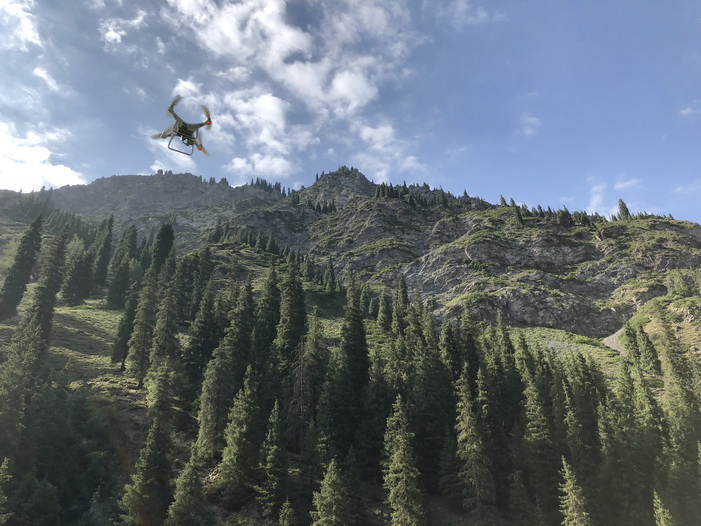Professor ZHU Jiaojun leads team to investigate the Three-North Protective Forests in Xinjiang
In 2018, it is the 40th anniversary of the construction of the Three-North Afforestation Program of China (abbreviation: Three-North Program). The Chinese Academy of Sciences (CAS), as a third-party agency, was commissioned by the State Forestry and Grassland Administration (SFGA) to conduct a comprehensive assessment of the Three-North Program in the past 40 years. The Institute of Applied Ecology (IAE) of the Chinese Academy of Sciences is the leading institute of this assessment task. IAE, together with the Institute of Geographical Sciences and Natural Resources Research of CAS and the Survey Planning and Design Institute of SFGA, has now completed the first draft of the assessment report. But it is found that information about the status of the Three-North Program in Xinjiang, which accounts for 40% of the Three-North Area, is not very clear and accurate, especially the Populus euphratica forest in the Tarim Basin, the farmland shelterbelts in Oasis area of southern Xinjiang, the spruce forest in the Tianshan Mountains and the shelterbelts along Taklimakan Desert Highway are badly in need of investigation.
Therefore, from August 13th to 18th, 2018, Prof. ZHU Jiaojun of IAE, led a team of 5 members, conducted a series of investigations into the status of protective forests in Xinjiang. Prof. ZHU and his colleagues were also invited to the Key Laboratory of the Oasis Ecology of Ministry of Education at Xinjiang University (hereinafter referred to as “Oasis Lab”), the (Xinjiang) Institute of Ecology and Geography of CAS and the Cele Desert Research Station of CAS (hereinafter referred to as “Cele Station”).
From the 13th to the 15th, accompanied by Professor Umut Halik of the Oasis Lab, the delegation took a field trip to the natural spruce forest on the northern slope of the Tianshan Mountain in Urumqi, investigated the natural Populus euphratica forest and shelterbelts along the desert highway in the Tarim Basin using Unmanned Aerial Vehicles (UAV), measured the groundwater level and assessed the regeneration status of Populus euphratica forest. The shelterbelts along the Taklimakan Desert Highway were also investigated and the groundwater level in the middle part of the Taklimakan Desert was monitored. In addition, the delegation exchanges scientific ideas with the teachers and students of the Oasis Lab. LU Guanghui, head of the Oasis Lab, presided over the academic exchange meeting. Prof. Halik talked to the delegation about the research team as well as the progress and achievements of the team in riverside forest ecological restoration and reconstruction, urban landscape planning and ecological design. Prof. ZHU briefed about the 40-year assessment of the Three-North Afforestation Program to the audience and was invited to give a talk on “Gap and Forest Regeneration”. He also exchanged ideas with researchers and graduate students of Oasis Lab on topics concerning the ecological problems of ecosystems in Xinjiang.
On the 16th, the delegation conducted academic exchanges with scientists at the Cele Station. Prof. ZENG Fanjiang, head of the station, talked to the delegation about the history, the infrastructure, the specimens and the achievements of the station. He also accompanied the delegation to the shelterbelts and windbreaks in Cele County. Prof. ZHU gave a talk on “the moisture mechanism of the decline of Pinus sylvestris var. mongolica plantation” and exchanged ideas with researchers and graduate students on issues related to ecological research in desertification areas.
From the 17th to the 18th, the delegation conducted a survey on the natural spruce forest in the Nanshan area of Urumqi. Temporary plots were set up to collect data such as DBH, tree height and forest regeneration.
The above-mentioned investigations provide important data for the assessment of protective forests in Xinjiang. The research and exchange activities will also promote cooperation between IAE and local institutes and universities.



| Download the attachment: |



